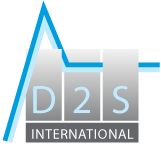Désolé – cette page n’existe pas en français.
La page recherchée n’est pas traduite dans la langue sélectionnée.
Ci-dessous vous trouverez la page en anglais.
Thermal Analysis
From products like bottles and cans to space age equipment, engineering history is rife with instances of failures due to insufficient understanding and/or accounting of thermal response of structures. Adequate knowledge of temperature distribution in structures, thermal flux and structural response to thermal gradients is critical to successful designs.
Hexagon’s (MSC Software) thermal simulation solutions enable you to model thermal response including all the modes of heat transfer, namely conduction, convection and radiation, which could be affecting the response simultaneously. Radiation view factors, critical for radiated energy flow calculations can be computed internally or imported from third party vendors providing options to our users. Additionally, both material properties and boundary conditions could be varied based on local temperatures, and can be modeled accurately and elegantly within Hexagon’s (MSC Software) products.
The objective of a thermal study is often to understand response and performance of the structure. Based on the modeling needs, chained or coupled analysis can be executed, to study temperature variations and effects on structural behavior, both in terms of the stress response and failure. The multi-physics capabilities that involve thermal response can be extended further to include Joule heating and electromagnetic effects enhancing the value of the simulation solution from Hexagon (MSC Software).
Thermal solutions from Hexagon (MSC Software) offer state of the art technology, options and performance.
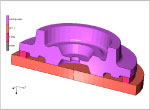
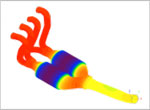
Comprehensive solver capabilities
Hexagon (MSC Software) offers solutions that are capable of addressing all modes of heat transfer, namely conduction, convection and radiation. Since convection is affected by the rate of fluid flow near a solid surface, the convection film coefficients depend on flow velocity. Also, when parts are close, but not in full contact, heat transfer between them is highly nonlinear and should account for the gap between them. Another aspect that affects heat transfer is the dependence of properties and boundary conditions on the temperature. For an accurate solution, all these factors need to be accounted for.
Whether you are looking for a steady state solution or a complete transient solution to better understand rate of thermal flow through various regions and parts of your model, Hexagon’s (MSC Software) solutions enable you to include all the necessary physics for accurate simulation of your thermal systems.
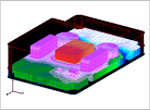
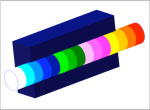
Efficient calculation of radiation view factors
The process of radiation is highly nonlinear. In addition to being dependent on temperature differential, radiation energy transmitted also depends on the viewing angle of a face with respect to thermal source. View factor calculations can be accomplished with efficient algorithms like Gaussian integration and hemi-cube method are available within Hexagon’s (MSC Software) products and can provided as input for thermal analysis.
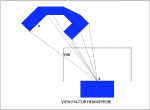
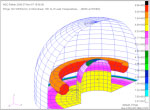
Thermal contact to allow heat transfer across bodies
Thermal contact capability enables you to model heat flow between components that are touching each other. The heat flux can be controlled by contact heat transfer coefficient which is a property of the contacting material pair. In addition, when the parts are close, but not in true contact, the heat flow is nonlinear. This scenario is modeled with special ‘near contact’ thermal flow equations. The goal of Hexagon (MSC Software) solutions is to provide you with an efficient and accurate methodology to enable you to simulate reality as reliably and efficiently as possible.
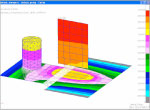
FEA and RC-Network based methods for technology choice
Hexagon (MSC Software) offers two key technologies for thermal analysis, namely, FEA based solution and RC network based solution. While FEA solution is used in most of the industries, RC network technology is also popular especially for aerospace applications. This method may also provide resource advantages for very large models. By integrating these two different thermal solution technologies in MD Nastran, Hexagon (MSC Software) offers a common solution for all the industries and provides a uniform approach to include thermal effects on a structural run.
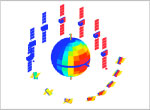
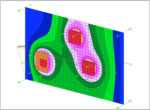
-
Aerospace & Defense: Jet engines, Nozzles, Avionics, Satellites/re-entry vehicles
-
Automotive: Exhaust systems, Drivetrain, Thermal effects on seal behavior, Welding, Backlite (Joule heating), Brakes
-
Consumer Products / Packaging: Bottle hotfilling, Thermal cycling effects on bottles/cans, Appliances
-
Electronics: Solder, PCB, Silicon wafers
-
Energy: Solar panels, Sealing performance due to thermal cycling, Pressure vessels
Demande d’information
D2S International offre des services de conseil en utilisant le logiciel d’éléments finis de HEXAGON (MSC Software).
